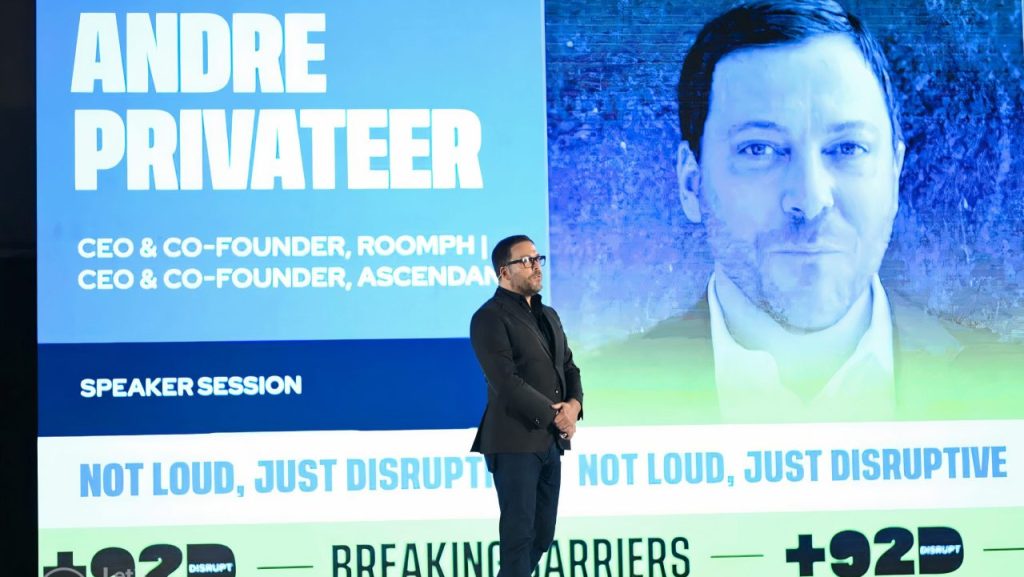The start of my entrepreneurship journey is almost cliche. It started at a university in Singapore.
I still remember in vivid detail how my cofounder and I had started our design and printing business. It was a few months into starting the company that we got our first big break. Designing and printing a large batch of name cards for a well-known company.
We were excited and had grandiose plans of what our business would become. Once we realized what we had agreed to, that is when the panic set in!
Instead of playing it safe, we decided to take most of our job’s proceeds, buy a large-scale printer, and keep it in our dorm room. I remember the day we received the printer. The delivery person was very confused when he ended up at a student hostel. We assured him it was right and managed to convince him to drop it off in our dorm.
The excitement was palpable. In our head, this printer was what we needed to do to build a big business. I remember reading through a ton of manuals to figure it out. After many hours we finally got everything assembled, plugged the printer into the socket and turned it on.
Immediately, the entire circuit for the floor went off with the load. That was when all of our excitement turned into horror in a flash.
I still laugh when I think about that day. While the business had an exciting beginning, it didn’t account to much, and we soon shut it down.
Every entrepreneur will have a genesis story. The moment when they decided to take a risk and put themselves out there.
Unfortunately, most entrepreneurs do not have the story of their dorm room startup, becoming a company like Dell.
After building startups for nearly two decades, I believe what it comes down to is whether an entrepreneur and startup can make it through the journey of relevance.
Listed below are the five steps I believe are needed if the entrepreneur and startup have a chance of completing the journey.
Step 1: The founder’s ability to become an exceptional producer
The best founders are not ordinary people. The words ordinary or average are their kryptonite. One cannot do 10,000 hours of being a founder and hope to have mastered everything about starting successful businesses. Exceptional founders are like producers who can bring together a variety of people and create something phenomenal.
The pattern I have noticed is that the best founders start their journey by sampling many areas of expertise and hone in on one or two of them. These skills range from attracting top talent, creating buzz, designing products that delight users, writing amazing copy, understanding how finance works or being great at sales.
In the end, they can make things happen on their own.
Everyone believes that they can do this. However, when it comes to making those difficult trade-offs in life: sacrificing personal relationships, your health, all your resources and committing to something when everyone else tells you that you are wasting time. Very few people can keep up with these pressures.
If you are not ready to do the above and spend every waking moment becoming exceptional at one or two competencies that will give you an edge, you are better off not going further on this journey.
Step 2: Finding an opportunity where you have an edge and are on trend
The internet has democratized the ability for anyone to create a startup. As a result, anyone can pay Shopify $29/month and is now an entrepreneur. The best founders combine the exceptional skills that give them an edge with an opportunity that is part of a rising trend.
In 2005 a pair of founders started a service called Odeo which was going to bring podcasting mainstream. While they had the expertise in building businesses around content, the trend wasn’t there. They would have had to stick it out till 2018-2020 to have a relevant business.
Luckily in 2006, Odeo pivoted into a service called Twitter, building on the rising trend of providing short status updates found on Facebook. By pivoting their business, they could use their expertise to create one of the most significant companies of our times.
The longer the journey to relevance becomes, the greater the amount of sacrifice needed. Don’t get stuck on an idea if there isn’t a meta trend that is pulling you forward.
Step 3: The distance between your customers and yourself
I have met exceptional entrepreneurs who have found trends where they have an edge, yet failed to convert them into viable businesses. The reason is that the distance between them and the customer was too wide.
When one cannot easily reach their prospective customers, I wonder how well the founder truly knows the customer segment. These days everyone is talking about how remote work is the future, and I meet several founders wanting to build products for this segment. Yet, very few of them have worked remotely or had founders and company owners within their network who run remote companies.
You can bridge this gap by picking up the phone and calling up these companies. However, when you don’t truly understand who the customer is and have difficulty reaching out to them, it massively slows down the process.
When the process slows, you can’t iterate fast enough. When you can’t iterate fast enough, you start to make incorrect assumptions far more regularly. Which almost always leads to failure.
Step 4: Time to value
A much smaller set of founders reach this stage. However, this is the stage where your producer skills are put to the test.
We live in a world filled with new products and services that are vying for our time and attention. The bar for a new product and services has never been higher. Which means that the longer it takes for your product/service to deliver value to the customer, the more likely they are to churn or not buy from you.
The best founders understand this metric intuitively. The shorter the time to value, the greater the probability that the product will have a higher chance of going viral or achieving word of mouth growth.
The skills needed to reduce this metric are very high, which is why the first step was the founder to prove themselves as an exceptional producer. These are the people who can see the whole picture and work on how to bring that value sooner to the customer that they deeply understand.
Step 5: Building momentum
Successful startups and founders who become relevant understand the importance of building and keeping momentum.
If you have been fortunate enough to make it through step four and have a compelling product/service with a low time to value, the next step is to find a sequence of events that if repeated enough times will propel you to the next stage.
I meet many founders who have built decent businesses yet struggle to become relevant. It’s like they are stuck in quicksand. Always on the hunt for that one magical channel to solve all of their growth problems.
What I have learned in building businesses is that the founder has to be the force of nature that goes through the brick walls to get the momentum going in the beginning.
Once you have built significant velocity in a niche, you need to construct a strategy behind what levers you need to invest in, which will increase your speed and elevate you towards becoming relevant!
On a long enough time horizon with unwavering persistence, I believe most people can make it through the journey of relevance.
We have all read stories of the struggling founder who suddenly hit it big overnight and became a worldwide celebrity. More often than not, the founder was making the same mistakes and hoping for a different result.
Getting all five of the pieces above in a row is very challenging. On the surface, it might sound straightforward. Most entrepreneurs who have been through the cycles many times will tell you stories of juggling an almost insurmountable set of tasks at any one time.
When luck is on your side, and you get them all in a row, that is when the founder and the startup become relevant.
This article is one that I wish I had read when I was starting my journey of entrepreneurship. I hope that it can help someone out there who is either starting or stuck on the journey.
Wishing all of you who embark on this journey the very best. I’ll be sharing information like this in the HOV Newsletter as well, be sure to sign up!
This blog is in collaboration with High Output Venture.





Great read. These are some of the core insights budding entrepreneurs don’t have access to / are not advised on at the start of their journey. Looking forward to more!
It is remarkable, very valuable information
——
https://www.mainstube.com/videos/white-cotton-panties-upskirt/ | https://www.mainstube.com/
Excellent read and very insightful.